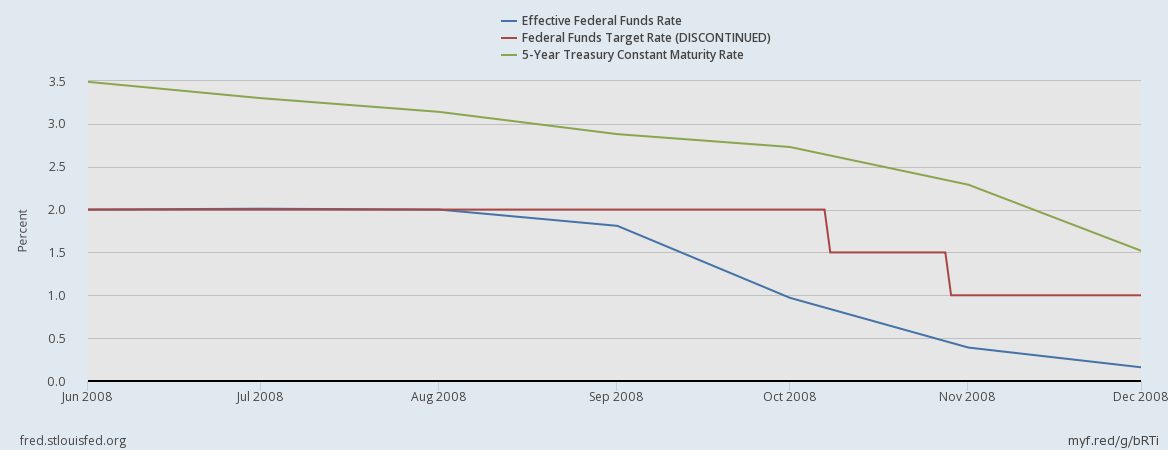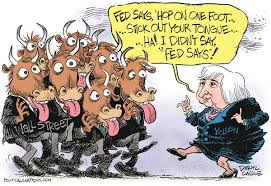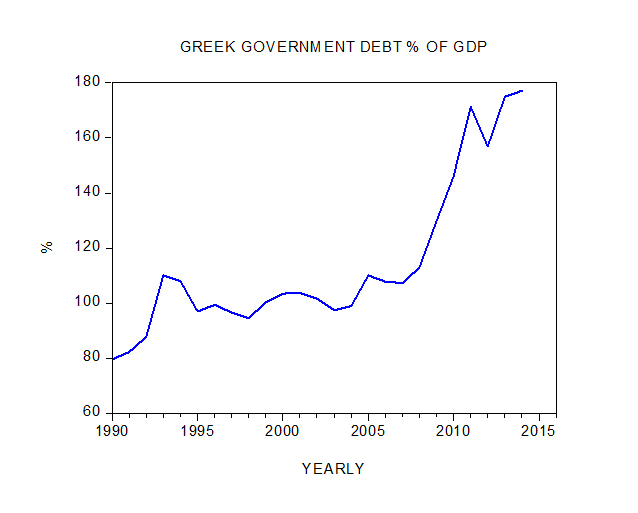July 9th was the anniversary of the most famous speech of any presidential campaign. William Jennings Bryan, in a speech to the 1896 Democratic convention, declaimed “You shall not crucify mankind upon a cross of gold.”
Although Bryan lost the general election to pro-gold William McKinley (and lost two other presidential races) that line still rings in the popular imagination. It represents a handy epithet against the gold standard by those who are unfamiliar with its history or superior track record.
As, in 1896, noted by The Nation and reprised there last week, rather surprisingly but for Karl Marx’s recognition that “money is by nature gold and silver:”
His speech to the convention was an appeal to one of the worst instincts of the human heart—that of getting possession of other people’s property without the owners’ consent. That is what is meant by free coinage at 16 to 1. All business and all obligations rest to-day, have rested for nearly a quarter of a century, on the gold dollar as the unit of value. It is proposed now to substitute a silver dollar for it worth about half as much, and to make this depreciated coin applicable to all existing bargains and contracts…
This speech swept the young silver-tongued orator to a presidential nomination. Bryan provides a fascinating historical juxtaposition to George Gilder’s exposition of the science behind the gold standard, in The 21st Century Case for Gold: A New Information Theory of Money, commissioned by The American Principles Project, whose sister organization I professionally advise, here reviewed by me, also last week. (Download it free, here.)
Gilder writes about how Shannon information theory underlies the working of the classical gold standard. Gilder explains with lucidity and authority some of the mechanics as to why the gold standard historically correlates so closely with good job creation, economic mobility, and a thriving working and middle income America — the key issue of the 2016 presidential race.
Bryan’s speech, conversely, illustrates an anti-scientific — even superstitious — stance of many of the gold standard’s most prominent critics both then and now. It is beyond odd that modern academics such as Paul Krugman should, in, for example The Cross of Gold, echo Bryan as if his words carry some intellectual authority.
Public intellectual Megan McArdle, in a 2007 column in the Atlantic.com (which she recently referenced in the context of presenting her thoughts on Greece) recycled some conventional, if ill-founded, tropes about the gold standard. She wrote “Money is a mysterious thing. … Economists studying this fascinating topic tend to suffer from migraines as they suffer from all the mysterious–hell, nearly mystical–attributes of money.” She might think twice before again opining on a subject about which she has made such a candid confession of ignorance.
At base, money is no more mysterious, nor mystical, than are calipers. (A comparable point is made by Steve Forbes and Elizabeth Ames’s splendid work Money: How The Destruction Of the Dollar Threatens The Global Economy — And What We Can Do About It.) Money is not “nearly mystical.” Money merely has been rendered thoroughly incoherent by demagogues and rascals.
This is not a new phenomenon. A much more apt observation than McArdle’s was that of Senator Nelson Aldrich, chairman of the National Monetary Commission, in a 1909 speech before the National Economists’ Club in New York City:
I think it was McLeod who said that the study of monetary questions is one of the great causes of insanity. We shall have to deal with men reasonably sane on other subjects, but whose insanity on this is apparent to all. We shall be confronted with objections from different classes of men; one cocksure that they know now just what system should be adopted and equally certain that no other plan is possible; another, demagogues who are attracting public attention to themselves by their incoherent utterances made expressly for self-exploitation.
Sen. Aldrich, in alluding to “demagogues who are attracting public attention to themselves by their incoherent utterances,” surely was taking a not-very-veiled swipe at William Jennings Bryan. Demagogues continue to quote Bryan’s line about the “cross of gold.”
To this day demagogues ignore the shameful antisemitic innuendos by Bryan both in this line and elsewhere. They ignore how roundly Bryan was rejected. And, as observantly noted by Forbes.com‘s own Brian Domitrovic in As The Fed Splintered The Cross Of Gold, Farmers Held The Bag, they ignore how destructive a direct derivative of Bryan’s position proved in practice.
Anti-gold-bugs furthermore coyly ignore the fact that Bryan mostly, now, is remembered for his career’s final act, a Quixotic effort to criminalize the departure from reaching literal Biblical Creationism. Bryan served as a prosecutor of John Scopes in the infamous “Scopes Monkey Trial.” Bryan also, famously, served as an “expert” witness in the prosecution of Scopes. This trial caused a nationwide sensation.
A snippet from the famous cross examination of Bryan by Clarence Darrow:
Q– Now, Mr. Bryan, have you ever pondered what would have happened to the earth if it had stood still?
A–No.
Q–You have not?
A– No; the God I believe in could have taken care of that, Mr. Darrow.
Citing Bryan is aligning against science. Bryan was much more highly regarded as an orator than as a thinker. As stated in Historical Beginnings. The Federal Reserve by Roger T. Johnson, (published by The Federal Reserve Bank of Boston, revised 2010):
For years Bryan had a reputation as one of the nation’s most outstanding and enthralling public speakers, but some people who knew him best believed that the power of his oratory concealed the paucity of his intellect.
One of his cabinet colleagues later sneered: “I discovered that one could drive a prairie schooner through any part of his argument and never scrape against a fact or a sound statement.”
Bryan demonstrated consistency as a Creationist … as to both God and mammon. That said, Bryan’s “paucity of intellect” does not make money either mysterious or mystical. Nor, for that matter, do the “economic Dadaist” pronouncements of contemporary mystagogues such as Prof. Krugman.
There are a number of myths about the gold standard. These have ossified in the minds of such Keepers of the Conventional Wisdom, besides Prof. Krugman, as Austin Goolsbee, once President Obama’s top economist. These myths also paralyze the thinking of the current crop of our economic officials and policy makers. Keynes, in his day, wryly described such figures as “Madmen in authority, who hear voices in the air … distilling their frenzy from some academic scribbler of a few years back.”
The quaintest of the anti-gold-standard myths is that the gold standard is an atavism, a holdover from an expired age, like buggy whips, ox-carts and clipper ships. Some economists, such as gold’s most flamboyantly persistent (and stubbornly uninformed) critic, Paul Krugman, bitterly cling to the pretense that contemporary macroeconomics is “scientific” while gold a “barbarous relic,” with its proponents “adopting a pre-Enlightenment attitude toward monetary and fiscal policy — and why not? After all, they hate the Enlightenment on all fronts.”
Krugman’s pretensions and accusations demonstrably are unsound. In my review of Forbes.com editor John Tamny’s Popular Economics I reprised Prof. Reuven Brenner’s astute observations in Asia Times on this subject:
Most people are unaware of the fact that rulers perceived astrology for almost a century as “science” – pretty much as some perceive “macro-economics” these days. … [M]acro-economics is now its modern incarnation: Only instead of stars, macro-economists look at “aggregates” gathered religiously by governments’ statistical agencies …. So let us … hopefully demolish this modern pseudo-”science” once and for all.
What, really, is modern macroeconomics? As trenchantly stated by Hayek in his Nobel Prize acceptance speech, it merely, pretentiously, is “scientistic” rather than scientific. “Scientism,” as Hayek elegantly explains, emulates the form without offering the substance of science.
That critique by Hayek, a fellow Nobel laureate, did not discourage Prof. Krugman from facilely dismissing Austrian, i.e. neoclassical, economics as “a theory that I regard as being about as worthy of serious study as the phlogiston theory of fire.” Prof. Krugman thereby put himself into a terribly awkward position.
Joseph Priestley, an authentic scientist, is credited with discovering oxygen. This was the discovery fundamental to the debunking of “the phlogiston theory of fire.” Priestley, however, expressed, in his Lectures on History and General Policy, erudite appreciation of the workings of the classical gold standard.
The gold standard, as Gilder trenchantly shows, is eminently scientific and, thus, modern. It is macroeconomics that is the pseudo-”science.”
The academic opponents of the gold standard resemble nothing so much as the Wizard of Oz. Iin the movie version of his farewell address the Wizard declaims: “I, your Wizard, per ardua ad alta, am about to embark upon a hazardous and technically unexplainable journey into the outer stratosphere…to confer, converse, and otherwise hobnob with my brother wizards.”
(The balloon, without Dorothy, then drifts upward, the Wizard shouting, “I can’t come back! I don’t know how it works!“ The fundamental things really don’t change as time goes by.)
It adds a delicious dollop of irony to note, as originally posited by the late Henry M. Littlefield in The Wizard of Oz: Parable on Populism that the The Wizard of Oz was a parable of late nineteenth century populism. (Dr. Littlefield, full disclosure, was my collegiate adviser at Amherst College.)
The yellow brick road denoted gold. The — originally — silver slippers alluded to “free coinage of silver.” Dorothy was the metaphorical representative of the American people. That anti-imperialistic veteran of the Spanish-American War, William Jennings Bryan, served as the model for the Cowardly Lion.
History surely will hold the Prof. Krugman to have played the role of defender of the economic equivalent of the phlogiston theory of fire. Real science, which Gilder describes, provides the real antidote to superstitions defended with pyrotechnic propaganda.
Thanks to George Gilder’s brilliant new 106 page monograph, elucidating the monetary implications of Shannon information theory, we better understand the scientific grounding for the classical gold standard. Gilder teaches us how Shannonism, rather than academic shamanism, has the right stuff with which pave ourselves a yellow brick road to a future of equitable prosperity.
Originating at Forbes.com





Not exactly monetary rocket science there, negating the matter of whether Bryant was on the science side of the gold-standard as a monetary policy question, primarily because he sided against Clarence Darrow in an obvious misfortune of history.
Of course, it is correct that Bryant’s science understanding of the money issue was indeed a bit paltry, but the only proof needed was in his change of heart on supporting the Aldrich Bill, based on the bankers’ faux opposition.
Many were fooled, but Bryant had a dog in that fight, and he let him get away.
My guess is Bryant knew yet a bit more than Krugman, who despite his powerful pulpit and global recognition has shown no understanding about money, banks and debt when it comes to their effects on the national economy …. as in, we are stuck in a debt-money-banking economic quagmire, Paul, so get yer head out.
Yet certainly Bryant knew a ton more than Marx, who is a jokester on the money question and its effects upon political economy.
I think that was Henry Dunning MacLeod that Aldrich was referring to, a leader in advancing a money science understandings in his time, and also an early source of monetary history in the days when Nobel scientist Dr. Frederick Soddy was about to break the taboo of public money with his publication on “The Role of Money”, still the best basic text ever written for the understanding of the PUBLIC, of their money system.
Just want to make sure that the Austrian scientists are facing front and center in the evolving money science debate, as neither the Classicists nor the Keynesians, their neo’s or their Post’s, will be relevant to straightening out the mess that is left from capital(debt) based money.
It’s the monetary reformers, from the Soddy school, that will lay down the money science needed to achieve prosperity from this privately-induced, debt-saturated remnant of bankers’ school money.
For the Money System Common.
..